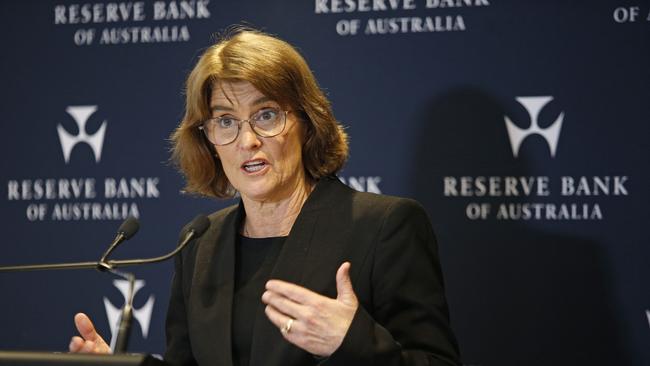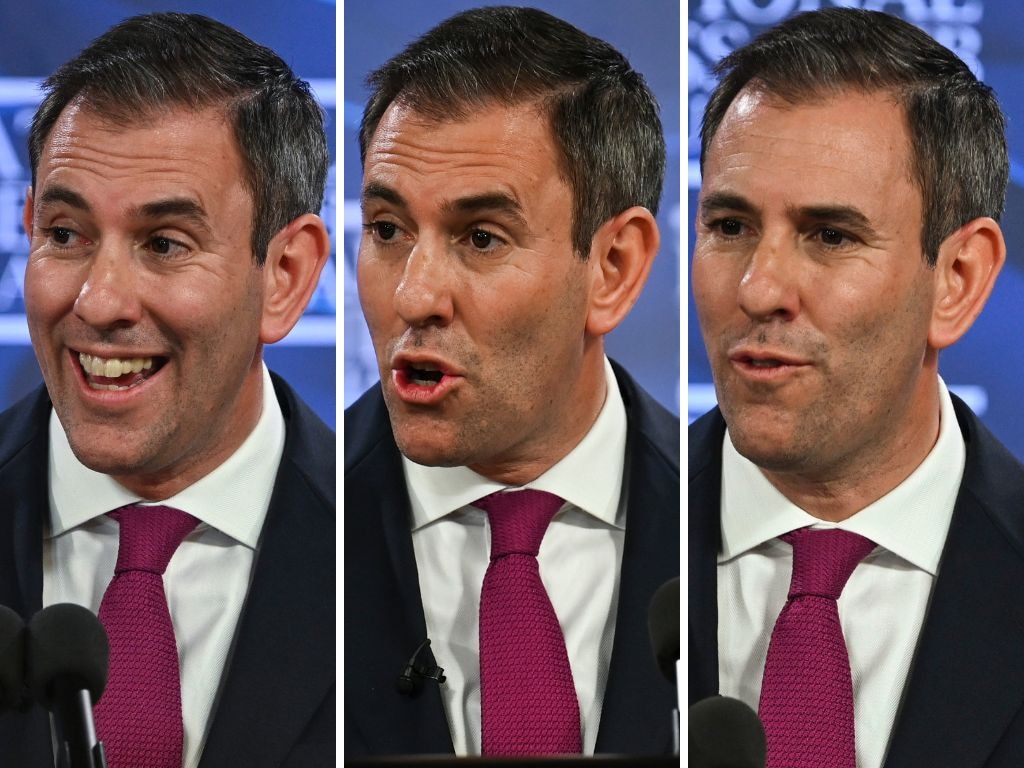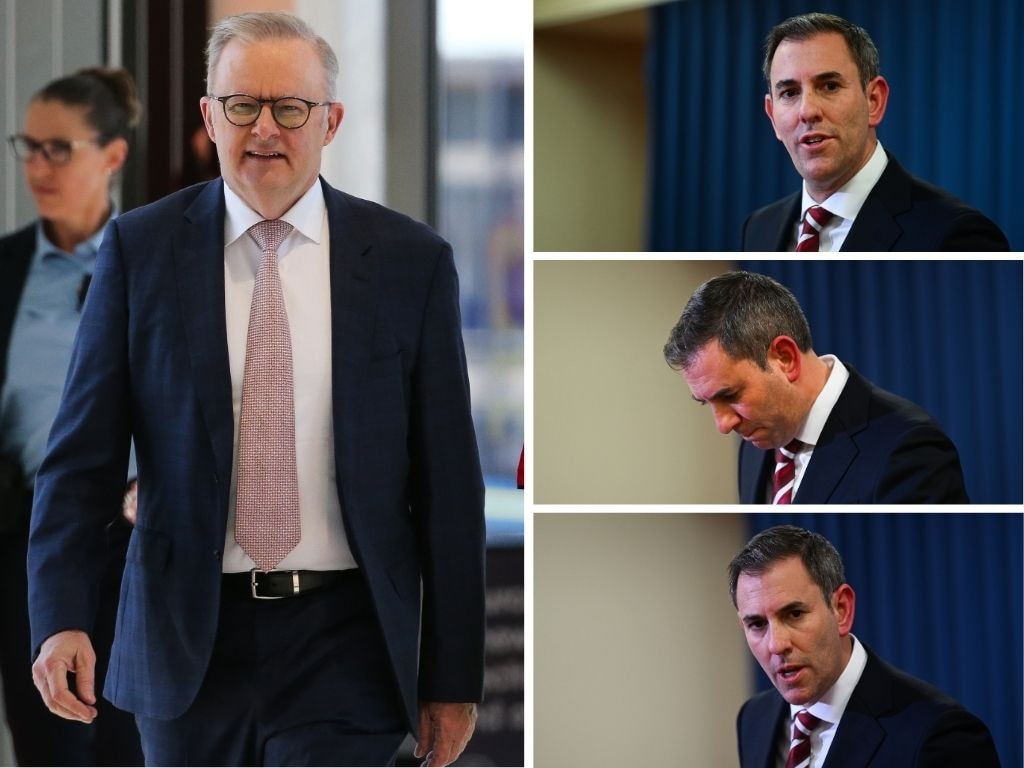Labor is all at sea, putting the nation’s treasure at risk
A rupture has emerged between the Albanese government’s political narrative and the central bank’s calls. Both sides are doubling down and digging in. There’s no winner in this. Policy will suffer.

The Scottish writer is also credited with the quote that “sooner or later everyone sits down to a banquet of consequences”. Karma. You reap what you sow. Or as the grim Ephesian Heraclitus, who speaks to some in our political class, put it, what you do is who you become.
The brutal consequences of monetary and budget policy choices are playing out before our eyes as high inflation becomes harder to quell, demand outstrips the economy’s supply capacity because of fiscal recklessness, and elevated interest rates maintain their squeeze on borrowers.
Volatility in global bond and stock bazaars was the prelude to this week’s Reserve Bank policy meeting; the mindless herd charged off a cliff after a weaker than expected US employment report a week ago. The markets cried cut, here and in America, but the data said otherwise and authorities held their nerve.
RBA governor Michele Bullock could not have made it clearer with her first foray into forward guidance: a cut in the cash rate was off the table for six months. Unless, of course, there is a marked change in playing conditions, such as war, pestilence or financial meltdown, when all bets are off.
“A near-term reduction in the cash rate doesn’t align with the board’s current thinking,” Bullock told reporters on Tuesday, while revealing the board had seriously considered the case for a rate hike at the two-day meeting.
“Now, I understand that this is not what people want to hear,” she said. “I know there are many households and small businesses that are struggling with interest rates where they are. Many people are doing it tough and we’re very conscious of that. The board is very conscious of that. But really the best thing we can do, and I’ve said this before, the best thing we can do is to bring inflation back down to target, because we can’t let inflation get away.”
In explaining its decision to keep the cash rate at 4.35 per cent, where it has been since November, the board said inflation was “proving persistent”, especially for services. It also spelled out the scale of its own poor performance: underlying inflation has now been above the midpoint of the 2-3 per cent target band for 11 quarters.
The new RBA staff forecasts run all the way to December 2026. Underlying inflation will still be above 2.5 per cent. So, on these estimates, that’s five years of failing to hit the target. As victory gets pushed into Neverland, people will rightly ask, as former RBA chief Philip Lowe pondered once, “Are they serious?”
Team Australia amity is falling apart, with a rupture between the Albanese government’s political narrative in the run-up to a poll due by May and the central bank’s reading of economic conditions and its subsequent judgment calls. Both sides are doubling down and digging in. There’s no winner in this. Policy will suffer.
The credibility of the RBA under Bullock and the board is on the line, as is the political shelf life of Labor, which is confronted by a cost-of-living morass and a rise in business failures. The product of joint policy actions and inactions, and inevitable testy public interactions, will be coming into sharper view in coming months.
The current rift – for there’s often a tension – was on show this week as Bullock explained the board’s thinking that demand, pumped up by government spending, was outrunning supply, while chief economist Sarah Hunter told a Senate committee the economy was “running a bit hot”.
Jim Chalmers, too, was running a bit hot and bothered: disputing the RBA’s calls, rejecting claims by independent observers his high sugar budget was adding to demand and claiming the government’s policies were helping to bring inflation under control.
Sure, it’s his job to be the face and voice of Labor’s economic marketing onslaught, but inflation won’t respond to talk therapy alone, nor will the RBA board. It’s the data, stupid, as one insider put it to Inquirer recently.
Recent data, according to Bullock, shows the level of demand for goods and services is running ahead of the economy’s ability to produce them. That gap, she said, is larger than previously thought and is responsible for persistent inflation. Officials now expect demand to pick up across the coming year, although there’s uncertainty about that and much else.
What’s behind this revival in demand? One factor that endures, but doesn’t receive the attention it deserves, is population growth. Official forecasts, frankly, have been hopeless and the Albanese government is scrambling to restrict this record migrant inflow, driven by temporary arrivals: students, backpackers and workers.
Labor has, belatedly, tightened up on visa hoppers, sham students, dodgy providers and graduates. But the pivot, such as it is, resembles a slow carve on a 1960s longboard rather than the crisp cutbacks executed on the waves at Teahupo’o reef, Tahiti, this week.
In the May budget, Treasury forecast net overseas migration of 395,000 for the year to June; the RBA’s assumption this week (which uses more timely labour force survey data) suggests the migrant inflow is likely to have been 530,000 (with total population up by 666,000 or 2.5 per cent). That’s another big miss, off by one-third, by Canberra’s population boffins.
Across this year, the RBA estimates the population to grow by 540,000, and by 385,000 in 2025. That implies a halving in migration next year (to around 270,00) from the 547,000 recorded last year, as student visa approval rates fall and departure flows return to normal.
The bottom line of the people boom is consumer spending is expected to be stronger and so is the demand for housing (notwithstanding a slight rise in household size), keeping pressure on rents in the capitals that attract migrants.
But the unmistakeable message this week from Bullock was the unhelpful contribution of public spending to aggregate demand. The central bank’s previous forecasts were finalised before May’s federal budget and several state budgets, including Victoria’s splurge, and the extravagant giveaways in royalty-rich Queensland and Western Australia.
As fiscal philosopher Chris Richardson says, in the real world all this stimulus from spendthrift governments will keep demand strong in a supply-constrained economy. “At its simplest, we get inflation when there’s too many dollars chasing too little stuff – that is, when demand is greater than supply,” he says. Bullock fully endorses that pithy explanation.
The forecasts show public demand growing by 4.3 per cent in the year to December; three months ago, the RBA’s forecast was for 1.5 per cent growth. For the 12 months to next June, forecast growth in public demand – which includes wages and capital works – has doubled to 4.1 per cent.
“Public demand is forecast to be stronger than previously expected, reflecting recent public spending announcements by federal and state and territory governments,” the RBA’s statement on monetary policy said.
And what would this mean? Underlying inflation will take longer to return to target because of “greater inflationary pressures in the economy”. “In part, this owes to a stronger outlook for domestic demand, led by higher public demand,” the RBA said.
Chalmers flatly rejects this interpretation, certainly any notion that there has been any slippage by Canberra. “Budget spending is not the primary determinant of prices in the economy, but we can be helpful, and we are being helpful, with the design of our cost-of-living policies which help us get back to targets sooner,” he said.
Among economists, the Treasurer has become an RL Stevenson castaway, a forlorn and lonely voice currently marooned on deficit island. Then, the other day, Anthony Albanese parachuted in between the palm trees.
Chalmers got lucky when Labor came to government; his fiscal treasure chest overflowed with taxes from a post-pandemic employment boom, the migration surge and sky-high export prices.
The Treasurer banked two budget surpluses and boasted that fiscal discipline was part of Labor’s DNA. A third surplus was attainable, according to informed sources, but it required persuasion from the custodian and fortitude right across the Prime Minister’s executive wing.
Chalmers could not resist fresh calls for spending, including energy bill subsidies and relief for rental and childcare costs, nor hold his footing as the “unavoidable” costs for aged care, health, disability services and debt servicing permeated the budget. Coalition legacies, including unfunded core services, the stage three tax cuts and a galling GST deal for Western Australia, have made matters worse.
Canberra’s underlying cash balance is expected to plunge into a $28bn deficit this year before a slide further into the red by 50 per cent in 2025-26. That’s quite a fiscal feed of consequences, even before we consider the gluttons from the provinces who are running up a collective tab north of $20bn in the current dining session.
From the national accounts, Saul Eslake has calculated the underlying trends in private and public spending over the two years since the RBA began raising the cash rate. State and federal government spending on goods and services, both fixed capital and consumption, increased in real terms by 11.9 per cent between June 2022 and March this year. The public spending calculation does not include cash transfers or energy subsidies, which go to households and show up as private spending.
Across the same period private consumption rose by 3 per cent. Eslake and a posse of veteran independent economists share the RBA’s view: public spending has been a major factor in sustaining aggregate demand beyond the economy’s supply capacity.
“Hence that is a source of ongoing and persistent inflationary pressures,” Eslake tells Inquirer. “The RBA has more weight on its side of the argument than the Treasurer does.”
This muddle will end in more pain for many, for longer than necessary. And that’s if the nation stays on Bullock’s “narrow path”, of inflation falling back to a target “within a reasonable time frame” while avoiding the job losses a recession would trigger. Free-flowing fiscal juice will make that road trip more treacherous.
But there’s also another bruising round coming in the clash of economic heavyweights. Because of government energy rebates and cost-relief measures, there’ll be a sizeable gap across the coming year between the headline rate of inflation (which will fall sharply and then rise up again) and the underlying rate, or “trimmed mean”, that only will ease steadily.
Labor will claim “mission accomplished” as inflation temporarily falls to 3 per cent by the end of the year, while the RBA’s preferred underlying measure is still at 3.5 per cent. Bullock and her team are preparing the community for that looming stoush as well.
Yet some former central bankers are worried that if the board waits too long before cutting rates, because it demands clear proof that inflation is beaten, it will end up “undershooting” the target and lead to more employment losses and weaker activity than was necessary to get the job done.
American lawyer Robert G. Ingersoll, nicknamed “the great agnostic”, said “in nature there are neither rewards nor punishment – there are consequences”. Genteel central banking and bare-knuckle governing are artificial constructs. After this era of cheap money and budget excesses, you can confidently dismiss any prizes and lay out the tableware for a feast of retribution and repercussions, as our inveterate alliterator might put it.








One of Robert Louis Stevenson’s best-loved works is Treasure Island (1883), an adventure story about a boy called Jim Hawkins. Our hero finds a treasure map and against the odds, facing all sorts of foes and setbacks, Jim triumphs.